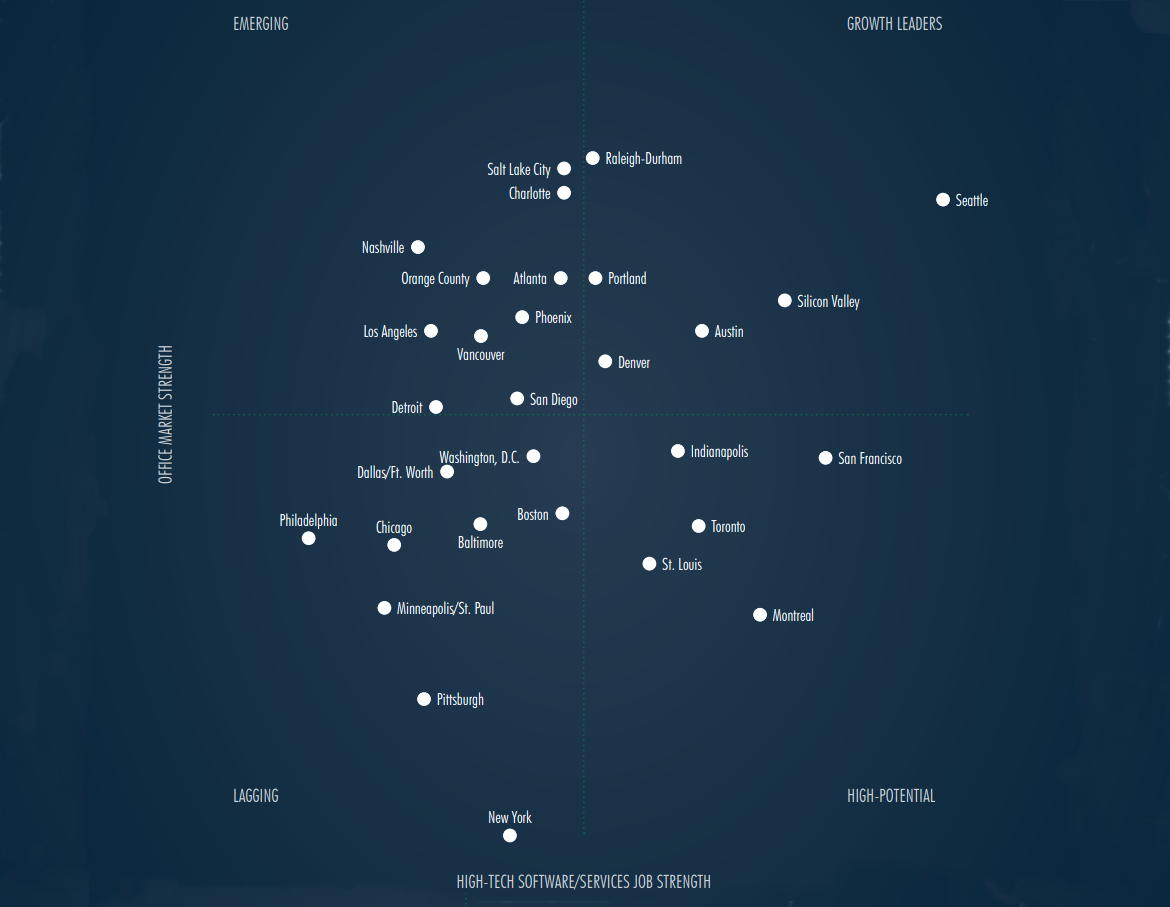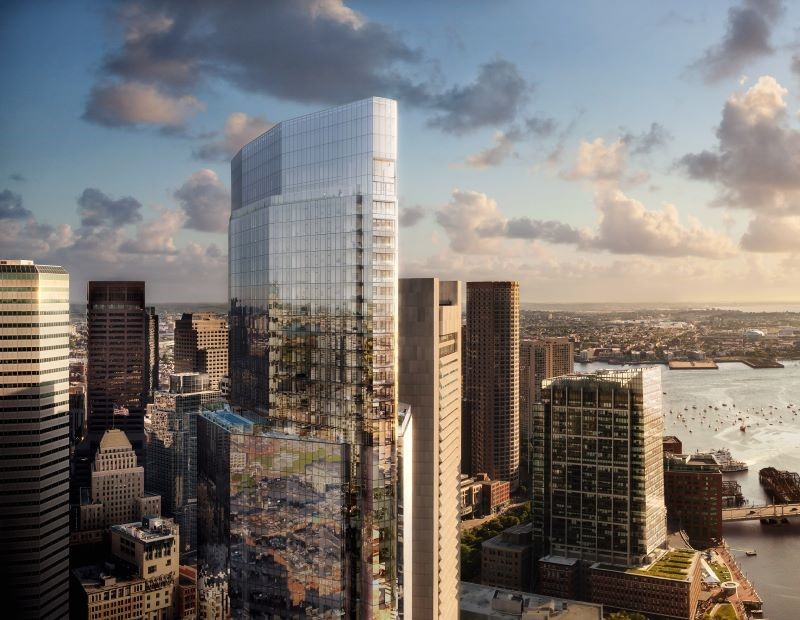Tech’s Take on Top Office Markets
A recent CBRE report shows how the industry influences market fundamentals, the migration of tech tenants and the emerging tech clusters in the South and Midwest.
By Corina Stef
After the recession, the tech sector gradually became one of the largest components of the nation’s economy. At the same time, employment requirements shifted from mid-level skills toward higher degrees. An increasing number of states are starting to depend on the growth of this industry, as tech is the main economic driver in the nation’s major markets. According to the U.S. Bureau of Labor Statistics, tech-based jobs are projected to grow by 13 percent—an approximate 557,100 jobs—between 2016 and 2026, at a faster pace than the average for all the other fields.
CBRE’s 2018 TECH-30 report offers a comprehensive analysis of office markets in the U.S. and Canada that are heavily influenced by high-tech, as well as how this business sector influences market fundamentals. According to the report, tech created 1.1 million new jobs since 2010, and the number is increasing by 5 percent each year—three times the national average. The growth leader is Seattle, which recorded a 26 percent uptick in tech jobs, outpacing San Francisco. Seattle, Silicon Valley, Austin and Denver are the fastest growing high-tech markets, while Portland and Raleigh-Durham are the newest additions to the list.
Leasing picks up steam
The sector’s leasing activity, which accounts for one-fifth of all leasing activity, recorded a similarly massive growth. Most closed deals were renewals and space expansions. “Technology has become an essential part of business and personal life and it has expanded at the fastest pace of any industry. Through the third quarter of 2018, the tech industry had a 21 percent share of major office leasing activity in the U.S., the largest of any sector. The tech industry will continue to be a demand leader for many tech-centric office markets across North America,” CBRE Research & Analysis Manager Lexi Russell told Commercial Property Executive.
The report shows that big tech firms are expanding outside the cities where they are based. In the last five years, these expansions accounted for more than 25 million square feet. Tech companies in the Bay Area were at the top of the list, having leased 18 million square feet across 10 other markets, predominantly in Seattle (3.5 million square feet) and New York (3.4 million square feet). Russell identified the existence of untapped talent as the main driver fueling this migration, and “investors are attracted when those fast-growing and high-credit companies arrive. The combination drives market fundamentals and enhances property value.”
Usually, where there’s job growth, there’s also office rent growth. Although asking prices recorded a sluggish increase in the larger markets with a lower concentration of tech companies such as Washington, D.C., and New York, the growth rate in less-established ones such as Philadelphia, Atlanta or Charlotte outpaced the 1.3 percent national average. CBRE also noted that eight markets achieved double-digit rent rises between the third quarter of 2016 and the second quarter of 2018, led by Atlanta (16 percent), Los Angeles (16 percent) and Orange County (15 percent).
What’s ahead
Utah and North Carolina house the next generation of tech markets. According to Russell, “Salt Lake City, Charlotte, Raleigh-Durham, Nashville and Portland are emerging tech markets. Top signs of an emerging tech market are high educational attainment and quality universities producing tech graduates to fuel growth, a vibrant, urban lifestyle to attract younger residents and spur population growth, and availability of moderately priced housing and room for further development.”
These secondary and tertiary markets not only provide a more affordable alternative, but also benefit from business-friendly environments. Additionally, investors see them as having the greatest growth potential. Salt Lake City recorded the highest rise in net absorption of new space over the past two years. Portland is strategically located between two top tech markets, while Charlotte’s affordability and high quality of life, combined with the recent Charlotte Fintech Initiative, will bolster the positive impact of the high-tech sector.
Even though vacancy is expected to decline even further, tech-oriented markets are bound to face challenges. “The biggest challenge to tech-oriented markets and to tech companies is competitive conditions for tech talent. Economic and office space demand growth is dependent on the ability to hire employees. The low unemployment rate nationwide and in many local markets is a headwind to tech company growth. Office space supply can also be a challenge, as new demand is typically faster moving than new supply, which often takes years to build and deliver,” Russell added.
The current flow of capital fueling tech startups as well as larger private companies, lower corporate taxes, and a continued push to integrate technology into various business models combined with strong economic fundamentals will help boost tech growth through 2020. Moreover, the sector will continue to expand at an above-average rate for the next seven years or more, as we are at the beginning of a technology super-cycle, CBRE noted.
“In the short-term, tech firms will continue expanding their search for talent across North America. Longer-term, technology is the future of a modernized economy and firms in the U.S. are leading its development and growth, most of which will require office space to house the talented individuals creating the software and hardware we all use daily. High-tech job growth will be above the national average but will slow down due to tight labor market conditions. The tech industry will get a better stability, managing to fix itself in the current economic cycle,” Russell told CPE.
Images courtesy of CBRE









You must be logged in to post a comment.